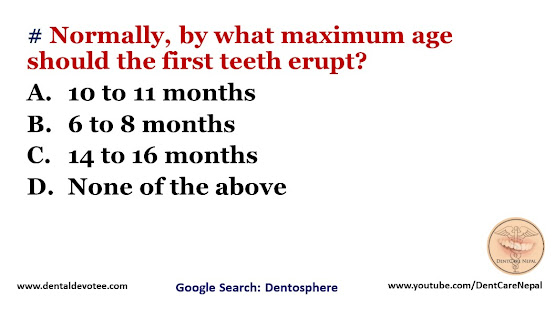# Average duration of function of primary dentition is:
A. 6 years
B. 8 years
C. 10 years
D. 12 years
The correct answer is A. 6 years.
The primary or deciduous dentition is considered to be completed by about 30 months or when the second primary molars are in occlusion. The dentition period includes the time when no apparent changes occur intraorally, i.e. from about 30 months to about 6 years of age.
The primary dentition may be in use from age 2 to 7 or older or about five or more years in all. Some of the teeth are in use from six months until 12 years of age, or a total of eleven and half years.
Hence, average duration of function of primary dentition is 6 years while the maximum duration is 10 years.







